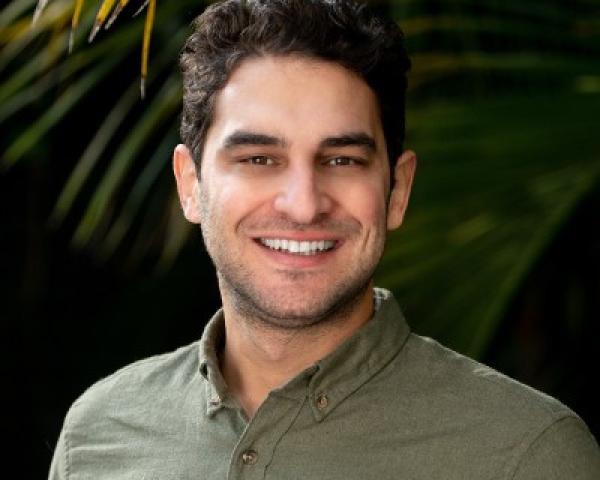Then -- a history lesson
Raise your hand if you remember when agents faxing hand-written applications to underwriters was commonplace. It wasn’t that long ago, was it?
Now that we have you yearning for the days of yore, let’s go back even further, to the early fire insurance industry. The only sensible way to underwrite a building was for the underwriter to personally visit each prospective property to assess the risk. This approach mostly did the job but was woefully inefficient.
Daniel Alfred Sanborn began producing and selling fire insurance maps to underwriting companies in the late 19th century. Sanborn Maps provided troves of underwriting details like construction type, fire walls, premises boundaries, natural features, occupancy and proximity to hydrants, fire departments and other structures and hazards. It became possible to underwrite properties without leaving the office. (Don’t listen to the naysayers; insurance has long been a hub of innovation.)
As we progress into the Y2K fears (let’s resist the urge to reminisce about those doomsday prophecies and their accompanying policy exclusion forms), seemingly overnight every insurance professional had a computer. Electronic applications could be completed and emailed quickly to multiple underwriters with a few clicks, and the carriers could expand their distribution more easily.
As insurance companies grew, they fostered heightened competition and developed products that were increasingly customizable to individual risks.
See also: Underwriting in the Digital Age
One problem persists: The underwriting primarily happens prior to the policy term and is largely based on the historical performance of the insured and other risks of similar makeup. This dynamic is particularly prevalent in small commercial insurance. Small businesses are complex enough to warrant assistance from a trusted adviser to help them get the right coverage at a fair price but small enough in revenue and loss volatility for the carrier to not afford much expense for continuing maintenance. Often, the carrier even waives their right to audit the policy’s exposures.
As we explored in Part 1 of this series, the set-it-and-forget-it strategy for small commercial underwriting has been the standard. Grow the book, ignore it, watch the loss ratio creep, re-underwrite the book. Rinse and repeat. Consumers are at the carriers’ mercy, only hoping they aren’t tabbed to be part of the portfolio getting chopped.
Now -- a case study
Through continuous underwriting practices, we today possess access to data to be smarter underwriters. Through automation, we can scale to benefit more consumers.
To demonstrate how these strategies can be implemented, let’s examine the insurance cycle for Billy Bob’s Bistro (a play on the authors’ names, if you’re paying attention).
After Behemoth Insurance Company was too aggressive and had to exit the restaurant insurance space, Billy Bob’s Bistro’s insurance agent must find replacement coverage at renewal. Through only a couple simple inputs, the new carrier can instantly learn more about Billy Bob’s than ever before.
As with souped-up Sanborn Maps, the underwriting community consumes assessor data and geospatial imagery to determine construction type and condition, proximity to hazards, fire protection and other underwriting characteristics like replacement cost estimation. We have advanced insights to help us understand probabilities of both natural (flood, hail …) and manmade disasters (crime, nearby underground storage tanks and their last reported leak …).
Much of this could be considered traditional underwriting data, just accessed instantaneously. But in that same instant we’re now also harnessing additional data. Through Billy Bob’s Bistro’s public profiles on search engines and social media, we can assess things differently than ever before. Reviews alert us of food poisoning concerns, online ratings can show when customer sentiment is decreasing to indicate potential heightened moral hazard, photos can identify the children’s playset that is not properly maintained, the menu’s cuisine points to the equipment maintenance requirements based on the types of cooking performed.
See also: The Promise of Continuous Underwriting
These insights coupled with a continuous underwriting process are advancing small commercial underwriting into a more sustainably profitable space. With such robust data available, there’s no need to set-it-and-forget-it any more. Now, sophisticated software can monitor changes to individual risks and portfolio trends without increasing overhead.
When Billy Bob’s changes their closing time to 2am and begins promoting live bands, the underwriter knows. When they expand from paninis to deep fried gator bites, the underwriter knows. Because modern technology can make these observations for us, we gain efficiency through monitoring processes.
One source of frustration for Billy Bob was always his term-ending audit. Now, he can register for a pay-as-you-go (PAYG) policy that integrates directly with his point of sale (POS) system. The U.S. restaurant POS market is projected to exceed $10 billion by 2030, thanks in part to the proliferation of food delivery apps integrating into these systems. Because the underwriter now receives Billy Bob’s detailed sales reports in real time, the need for an audit is eliminated, saving Billy Bob time so he can focus on his own customer service. Additionally, because his business has seasonal shifts, the PAYG policy automatically adjusts his premium to reflect his true exposures, a cash flow benefit.
To capitalize on their more popular recipes, Billy Bob’s Bistro buys a van for catering. They add a usage-based auto insurance (UBI) policy to cover the auto exposure while tracking the driving behaviors through a telematics app. Because the trips are infrequent and within a small radius, the UBI policy automatically lowers the premium - but this is more than offset because of Billy Bob’s lead foot.
Billy Bob secured replacement coverage quickly that automatically lowers his premium during slower months and doesn’t force him into a time-consuming audit. His agent has substantially reduced the amount of information he has to provide during the application and renewal processes, allowing the agent to focus on additional revenue generation activity. The insurance company’s PAYG and UBI policies provide an updated risk profile that more closely reflects the desired appetite, removes the risk of premium leakage and guards against insurance fraud with independently verified exposure data.
Most excitingly, these practical examples are all available today with concepts applicable in all industries, including service, retail, hospitality, contracting, healthcare, manufacturing and transportation. With the rapid development of AI, the possibilities for additional insights and predictive models will continue to increase the application effectiveness of continuous underwriting.
Because we are able to process more data more quickly and precisely, we are less reliant on human observation to make every decision. Now those underwriter’s eyes can evaluate a risk with far more granularity. Done properly, this can provide benefits to stakeholders on all sides of the insurance transaction.
Continuous underwriting is here to stay and already proving its worth. Capabilities will only continue to expand as new data sources are brought into the underwriting workbench. Done properly, continuous underwriting can provide benefits to stakeholders on all sides of the insurance transaction and advance the practical evolution of underwriting and insurance, even if it’s hard to hang on the wall next to your firemark Sanborn Map and Y2K exclusion.









